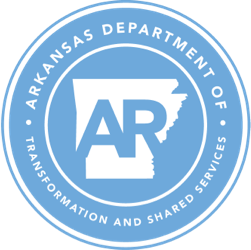March 7, 2024
by Michael R. Wickline | Arkansas Democrat-Gazette

Arkansas Gov. Sarah Huckabee Sanders on Wednesday proposed increasing the state government’s general revenue budget by $109.3 million to $6.31 billion in the next fiscal year that starts July 1 with most of the increased funding for education programs.
The Republican governor said the proposed 1.76% increase in the general revenue budget for fiscal year 2025 from fiscal year 2024 is far below the 3% year-over-year increase the state has averaged in recent years. Fiscal 2024 year ends June 30. The fiscal year 2025 starts July 1 and ends June 30, 2025.
“I am proud that this year’s budget puts an end to government’s spiraling growth while still fulfilling the priorities Arkansans elected me to implement,” Sanders wrote in a letter to Joint Budget Committee Co-Chairmen Rep. Lane Jean, R-Magnolia, and Sen. Jonathan Dismang, R-Searcy.
State Department of Finance and Administration officials presented the governor’s proposed general revenue budget to the Joint Budget Committee on Wednesday morning before Sanders departed on a trade mission to Asia.
During the committee’s first day of budget hearings in preparation for the fiscal session starting April 10, some lawmakers questioned state Department of Correction officials about the status of its plans for a 3,000-bed prison. Other lawmakers said they are concerned about the impact on students and employees from proposed reductions in state general revenue for some of the state’s higher education institutions.
The proposed general revenue budget projects a general revenue surplus of $376.6 million in fiscal year 2025 if the state’s general revenues meet the state Department of Finance and Administration’s latest forecast of $6.68 billion for net general revenues in fiscal year 2025.
The finance department projects a $240.5 million general revenue surplus in fiscal year 2024.
The governor’s proposed general revenue budget would increase the state’s general revenues for the public school fund by $38.2 million in fiscal year 2025 to $2.48 billion. That includes a $34.2 million increase in general revenues to $2.44 billion for the state Department of Education’s Division of Elementary and Secondary Education and a $4 million increase in general revenues to $26.8 million for career and technical education.
Sanders’ proposed general revenue budget in fiscal 2025 would also increase the general revenue for the state’s Education Freedom Accounts by $65.7 million to $97.4 million. The Education Freedom Accounts are vouchers designed to help students attend private school, parochial school, or home school.
She said the LEARNS Act enacted by the General Assembly in 2023 was the largest overhaul of Arkansas’ school system in modern history and implementation “is where the rubber meets the road.
“That’s why this budget funds last year’s commitment to put an additional $100 million to raise starting teacher pay [from $36,000] to $50,000 — taking us from 48th in the country to the top five — expand education freedom to thousands of new families, and invest in literacy coaches statewide,” Sanders said. “In the same vein, it includes an additional $2 million for the University of Arkansas-Pine Bluff’s land grant matching program, bringing the state’s total contribution to the program to $5.8 million.”
During the Joint Budget Committee meeting, Sen. Stephanie Flowers, D-Pine Bluff, said UAPB needs a total of $7.4 million in state funds for the land-grant matching program, so she questioned why the university wouldn’t get the additional $1.6 million needed in state matching funds.
Robert Brech, fiscal and budget administrator for the finance department, said he’s heard the additional $1.6 million that UAPB needs may be needed over a year or a two-year period, and there is still $2 million set aside in the state’s restricted reserve fund for UAPB’s land-grant matching program, and UAPB “can request whatever is needed” out of the state’s restricted reserve fund to “make up that deficit.”
The governor’s proposed budget would reduce the state’s total general revenue allocation to the state’s institutions of higher education by $2.4 million to $778.8 million in fiscal year 2025, including a $1.8 million reduction to $628.6 million for the four-year institutions, a $848,319 reduction to $117.1 million for the two-year institutions, and a $241,699 increase to $33 million for the technical colleges.
The state’s overall higher education productivity model declined by .14% this year and this is the first year that that’s happened with the model, said Nick Fuller, assistant director of finance at the state Department of Education’s Division of Higher Education,
“While we don’t recommend new funds [due to the negative productivity], there is a section where we reallocate funding from institutions that had negative productivity to the schools that did show productivity for the year,” and only one four-year school was productive this year, he said.
The higher education productivity model is based on a three-year rolling average, and “this year is the first year that we have a full year of the covid impact in that comparative, so we had the big dip in the students on the campuses in general [a few years ago],” Fuller said.
Sanders also proposed allocating $4.5 million in general revenue to fund a sustainable building maintenance program revolving loan program for the state’s higher education institutions in fiscal year 2025.
A Joint Budget Committee co-chair, Sen. Jonathan Dismang, R-Searcy, said there are some issues with the state’s higher education productivity model that should be considered during the 2025 regular session so work needs to be done on that model.
Sen. Linda Chesterfield, D-Little Rock, said the state’s higher education institutions have been underfunded for years and the proposed general revenue budget also would take away general revenues from universities such as the University of Central Arkansas, the University of Arkansas at Little Rock and UAPB, and reallocate the funds to the University of Arkansas at Fayetteville.
UA Fayetteville’s general revenue budget would increase by $387,468 to $134.5 million in fiscal year 2025 under the governor’s proposed budget.
The governor’s proposed general revenue budget would increase general revenues allocated to the Division of Arkansas State Police by $3.8 million to $92.5 million in fiscal year 2025. Sanders said her budget would allocate $3.8 million to fund an additional Arkansas State Police trooper school, “allowing us to renew the ranks of state police and focus on keeping all Arkansans safe.”
For the state Department of Corrections’ Division of Correction, the governor proposed increasing general revenue by $536,285 to $434.8 million in fiscal year 2025. For the state Department of Corrections’ Division of Community Corrections, the governor proposed a $571,631 increase in general revenue to $105.3 million.
Sanders proposed keeping the general revenue allocation for county jail reimbursement at $25.7 million in fiscal year 2025. Brech said a $4.2 million supplemental request for county jail reimbursement will be made during the fiscal session.
Department of Corrections Secretary Lindsay Wallace told the Joint Budget Committee she considers 1,500 to 1,800 state inmates in county jails to be acceptable.
Asked after the committee meeting about the number of state inmates in county jails and how many are in state prisons, department spokeswoman Dina Tyler said the “backup today is 1,834.
“In-count is 16,434. That’s everybody in a state prison bed,” she said in a written statement. “Jurisdictional [count] is 18,666. That’s everybody we’re responsible for. It includes the backup, 309 inmates, etc.”
Asked by Sen. Kim Hammer, R-Benton, about the location and timeline for the state’s proposed 3,000-bed prison, Wallace told the Joint Budget Committee “at this time, we still are drilling down into the data to try to find the most right location.”
“All pointers seem to be leading to that I-40 corridor,” she said. “We don’t have any facilities between Conway and Fort Smith. I know there have been some sites that have been spotted. I don’t believe anything has been specifically identified at this point.
“We are trying to make sure we have the workforce, we have infrastructure needs, all of the big things” that are required for a new facility, Wallace said.
“We are moving as fast as we can, but that’s where we are right now, still trying to identify the perfect location,” Wallace said.
She said the idea with a 3,000-bed prison is to have a complex with three separate 1,000-bed facilities sharing services to more efficiently provide these services.
Dismang said there has been money that has been set aside for the construction of a prison, but “it seems like we are pretty stagnant in even determining a location.”
He said the state Board of Corrections considers this decision its call, and “for whatever reason there is no push to finalize and get actual movement on what we are going to do, so the longer we delay, even though the funds are in hand, the longer it is going to be to set it up and the farther out we push out these issues with county jail reimbursement and everything else.”
Dismang said, “I think what we may need to do … is have that conversation” with the state Board of Corrections members about a timeline for site selection, but he doesn’t know the proper committee for that discussion.
“If the board is going to maintain that they are in the sole authority of when, and where and how a prison is going to be constructed, and we are concerned about when and where and how, then we need to be asking them,” he said.
After the committee meeting, Tyler said in a written statement “The design and sighting for the new beds were being handled by the previous secretary.
“He did not include the board in any discussions or plans,” she said.
On Jan. 10, Department of Corrections Secretary Joe Profiri was fired by the board in the tumult that began after the body refused to open as many temporary beds at state prisons as Profiri and Sanders had requested. Just hours after Profiri’s termination, Sanders announced she had hired him as a special adviser in her office with a salary of $201,699.89. His special adviser job became effective Jan. 12.
The state Department of Human Services’ proposed general revenue budget would increase by $4.4 million to $1.83 billion in fiscal year 2025 under the governor’s proposal, including a $4.16 million increase to $28.6 million for administration. But most of that general revenue increase is from the transfer of the Temporary Assistance for Needy Families program from the state Division of Workforce Services to the state Department of Human Services, said Brech.
After the Joint Budget Committee’s meeting Wednesday morning, the governor’s office released Sanders’ letter to state employees in which she said she hopes to overhaul the state employee pay plan in its entirely in the 2025 regular session.
In the meantime, “I am asking the legislature to approve this temporary plan, which recognizes the need to recruit and retain talented public servants by being more competitive and authorizes my administration to make a one-time 3% increase to Arkansas state employee pay,” the governor wrote in her letter to state employees. “This plan also raises every state employee’s pay to at least $15 an hour by July 1st.”
“To reward our best for their hard work and commitment to Arkansans, this plan raises the maximum salary range for all pay grades by 10%,” she said. “It also authorizes new incentives for future recruits and current employees who go above and beyond, either through a lump sum payment or through extra hours of paid leave.”
Afterward, Alex Johnston, chief of staff at the state Department of Transformation and Shared Services, said the total annual cost for this proposal would be $42.4 million from all sources of general revenue, including about $19.3 million in general revenue.
Finance department spokesman Scott Hardin said funding for this temporary plan would come from existing budgets of state departments with the state’s Performance Fund in place to address any gaps if necessary.
Full article can be viewed HERE.

